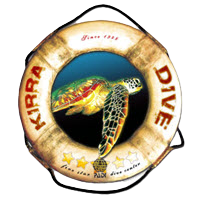SELF RELIANT DIVER
The PADI Self Reliant Diver course is an introduction to self-reliant diving that helps student divers develop the skills, knowledge and techniques necessary to rely on themselves first (whether or not they are diving with a partner) including:
The value and application of the buddy system
The philosophy of, and motivation for, diving without a partner
Potential risks of diving alone, and how to manage those risks
The value of equipment redundancy and what back-up equipment is needed
Dive planning and gas management
Availability: Contact us for booking information
Prerequisites
Be at least 18 years of age
Hold at least a PADI Advanced Open Water Diver certification (or equivalent)
Have logged at least 100 dives
Have successfully completed a dive skills assessment by a PADI Self-Reliant Diver Specialty Instructor
NSTRUCTORS AND DIVEMASTERS
Instructors and divemasters are often with a group of students or certifi ed divers
exploring the local dive sites, however, they may not have a specifi c dive buddy.
Being self-suffi cient and self-reliant provides the skill set needed for instructors
and divemasters to respond to emergencies independently.
PHOTOGRAPHERS AND VIDEOGRAPHERS
A photographer’s or videographer’s buddy is usually in the viewfi nder and
sometimes a distance away.
Photographers or videographers may pay attention to the environment around
them, but not pay much attention to a dive buddy
Because divers capturing images are typically concentrating on their subjects
(such as fi sh or environment), and often not as much on their buddies,
photographers/videographers and their dive buddies benefi t from learning selfreliant
diving skills.
TRAVELLING DIVERS
While traveling, divers may end up with a dive buddy they have not met and
that may not share the same dive objectives.
Buddy separation can be avoided in many ways, but if it does happen a selfreliant
diver is better prepared to handle the situation.
WRECK DIVERS
Recreational wreck, cavern and ice divers should not dive alone in overhead
- environments.
- However, the wreck diver who has the skills and knowledge of a self-reliant diver
- is more likely to properly handle buddy separation and to deal with emergency
- situations.
TecRec DIVERS
- Diving without a partner is not unusual for TecRec divers.
- In some cases, trained cave divers dive without a partner in no mount and
- sidemount areas.
-
Standard diver equipment, at a minimum STANDARD DIVER EQUIPMENT
Fins, mask, snorkel, compressed gas cylinder and valve, buoyancy control device and low pressure inflator, primary
regulator and alternate air source, breathing gas and depth monitoring device(s),
quick release weight system and weights (if needed), adequate exposure protection,
at least one audible surface signaling device and dive computer or RDP.Surface marker buoy
a. Delayed Surface Marker Buoy (DSMB) with at least 30 metres/100 feet of line
b. Lift bag with at least 30 metres/100 feet of lineRedundant air sources
a. Pony cylinder
b. Twin cylinders with isolation valve
c. Bailout cylinder
d. Sidemount confi gurationRedundant surface signaling devices (both visual and audible)
Redundant depth gauge and bottom timer or dive computer
Other equipment
a. Two knives/cutting tools as permitted locally
b. Back-up mask (recommended)
c. Slate and pencil


